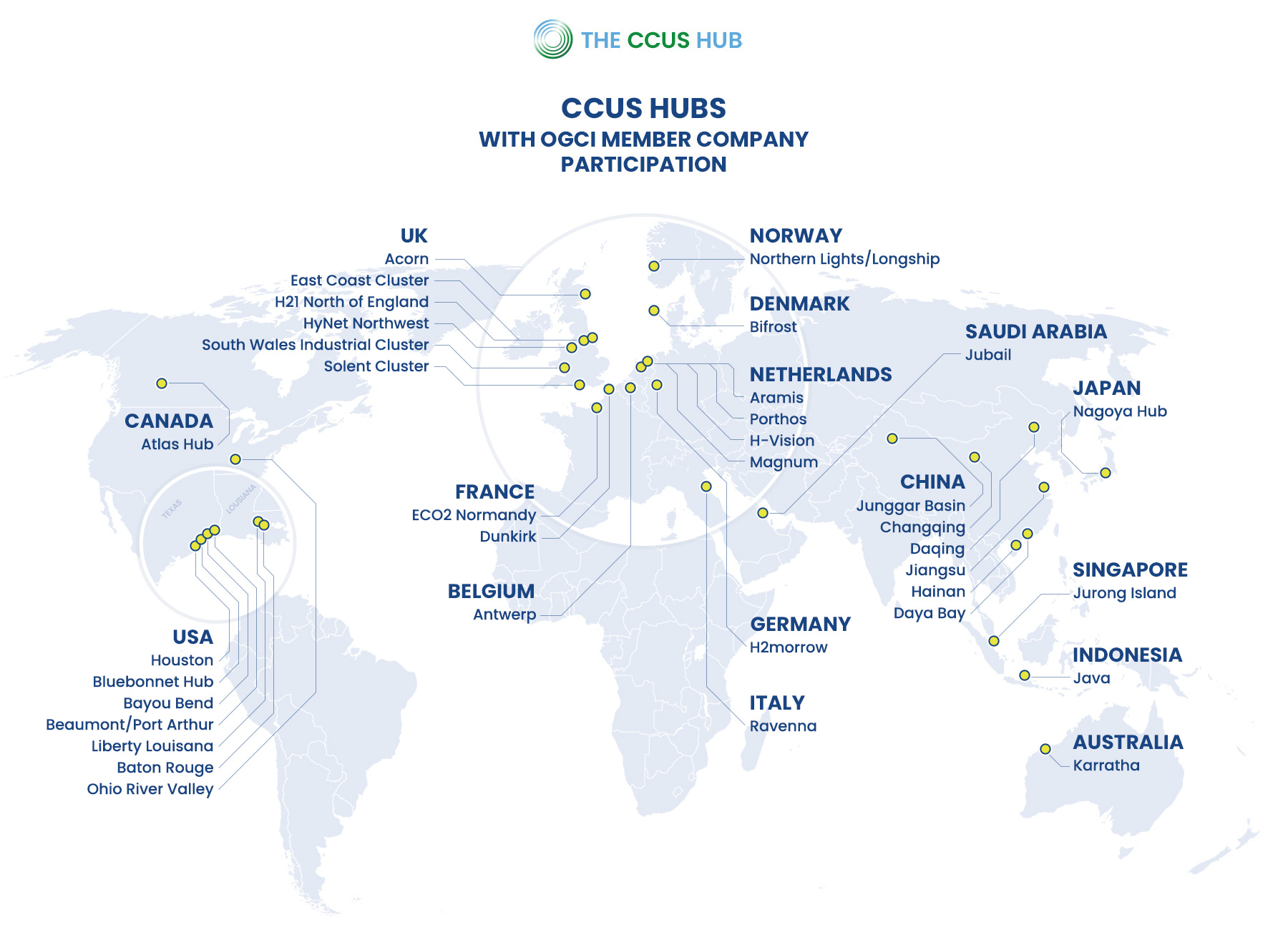The Clean Energy Regulator issues (by auction or directly) Australian Carbon Credit Units (ACCUs), over a 25-year period, to new registered capture projects with permanent storage, including new capture points in CCUS hubs. ACCUs can be sold to the Government or on the secondary market.
Policy support mechanisms for CCUS hubs
More and more countries are introducing policy incentives to accelerate CCUS hubs and projects, as part of broader decarbonization strategies.
Search by country or filter by type of support mechanism.
- Australia
Carbon Innovation Grants Program (West Australia)
- Feasibility studies (up to 50% of project costs, to a maximum of A$500,000)
- Pilot projects and capital works (up to 25% of project costs, to a maximum of A$1.5
million)
- Canada
Investment tax credits for CCUS
- Valid 2022-2030; (credits decline after 2030 and expire in 2040)
- 60% for investment in direct air capture equipment
- 50% for investment in other carbon capture equipment
- 37.5% for investment in transportation, storage and use
Covers geological storage in Alberta, British Columbia and Saskatchewan (plus mineralization in concrete).
- Canada
Alberta Government incentives
The Technology, Innovation and Emissions Reduction fund has created grants for specific CCUS projects and spawned an emissions reduction credit system, with offsets for capture and storage, sequestration credits and capture recognition tonnes.
- China
Low-cost loans for emitters
The People’s Bank of China provides financial institutions with low-cost funds (interest rate of 1.7%) through a carbon emissions reduction facility, including carbon capture projects.
- Denmark
Subsidies for CCS deployment
20-year contracts to be awarded through competitive tendering to industrial companies capturing and permanently storing at least 400,000 tonnes of CO2/year from 2026 (max. €55 million per year). Aid covers the difference between estimated total costs and expected returns. Total spend €2.4 billion, funded by green carbon tax. See sample contract.
- EU
European Innovation Fund
Risk-sharing support of up to 60% of additional capital and operation costs for large and small-scale flagship decarbonization projects, including a focus on construction of CCS infrastructure, carbon capture, and carbon utilization. Funds derived from ETS; disbursed between 2020-2030
- EU
Projects of Common Interest
Accelerated permitting and Connecting Europe funding for key cross-border infrastructure projects, such as CCUS transport and storage infrastructure, connecting energy systems and aligned with the Paris Agreement.
- EU
Net Zero Industry Act
A March 2023 proposal to include CCUS as one of eight strategic climate technologies, set a target of 50 million tonnes per year of storage capacity by 2030, support and possibly mandate for developing storage capacity.
- EU
Carbon Border Adjustment Mechanism
The EU carbon border mechanism, designed to prevent carbon leakage (the shift of production to less-regulated jurisdictions) will be phased in transitionally from October 2023, with the system in full force from 2026. It sets a carbon price on carbon-intensive goods entering the EU to create a level playing field for EU producers as free ETS allowances are phased out. It could incentivise CCUS outside the EU.
- Netherlands
SDE++
Operating subsidies based on a contract for difference on the ETS carbon price for CO2-reduction projects, including carbon capture for storage and utilization. Action bidding based on application for a subsidy intensity limit (€ per tonne of CO2). Funding is awarded over 12-15 years. Continues through 2035
- Norway
Longship support scheme
To kickstart the commercialization of the world’s first CCUS hub, the Norwegian government is spending over €2 billion to cover around two-thirds of the cost of setting up the Northern Lights infrastructure and for two Norwegian capture projects. After that, funding will for operators will come from commercial fees and for emitters from EU funding (for which Norway and Iceland are eligible).
- US
45Q investment tax credit
Amended with the Inflation Reduction Act in 2022 to raise levels, improve access, extend remit and lengthen duration.
• $85/tonne for permanent storage
• $60/tonne for EOR or other industrial uses, if emissions reductions can be clearly demonstrated
• $180/tonne for direct air capture with permanent storage; 130/tonne for direct air capture with utilization
• Projects have until 2033 to begin construction and the subsidies last 12 years.
- US
Infrastructure Investment and Jobs Act
$12.1 billion in total, divided between demonstration projects, pilot projects, FEED studies, shared transport infrastructure, storage site development, permitting, grants to states and direct air capture.
- US
Grants for demonstration projects
The Carbon Capture Demonstration Programme and the DAC Hub program provide federal cost sharing for projects that advance the development, deployment and commercialisation of CCUS and DAC technologies.
- UK
Carbon Capture and Storage Infrastructure Fund
£1bn to fund four clusters that can capture at least 10Mt/year by 2030, including two already announced. Includes detailed government-supported business models for transport and storage, industrial carbon capture, power, hydrogen, waste. The Scottish government will independently award up to £80 million for one CCUS cluster.
- UK
Industrial Carbon Contract
Mechanism to incentivize industrial users to deploy carbon capture technology to achieve deep decarbonization. Provides capital co-funding and ongoing revenue support, based on a payment for difference between a strike price and a reference price, for projects selected as part of the cluster sequencing process.
- UK
Direct support to large-scale CCUS hubs
Announced in March 2023, the UK government has promised £30 billion over the next 20 years to support projects that aim to store 20-30 million tonnes of carbon dioxide annually.

